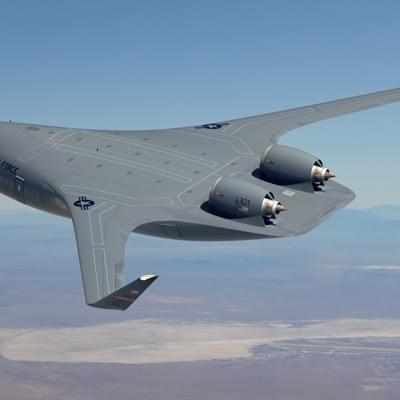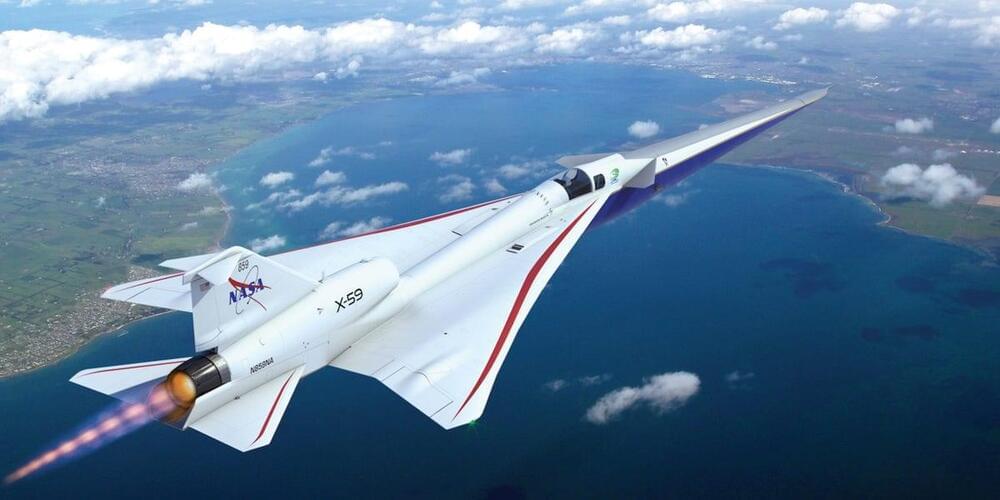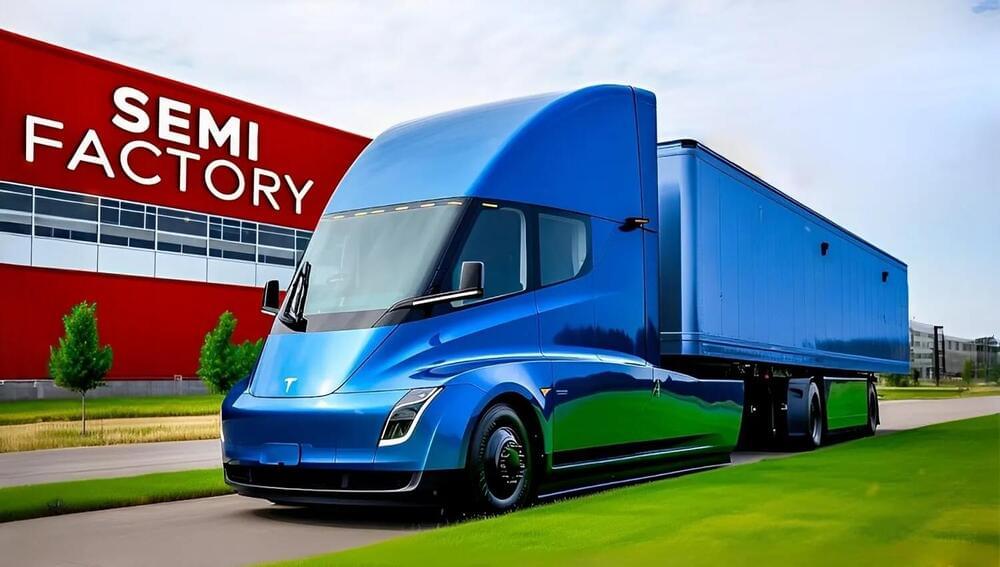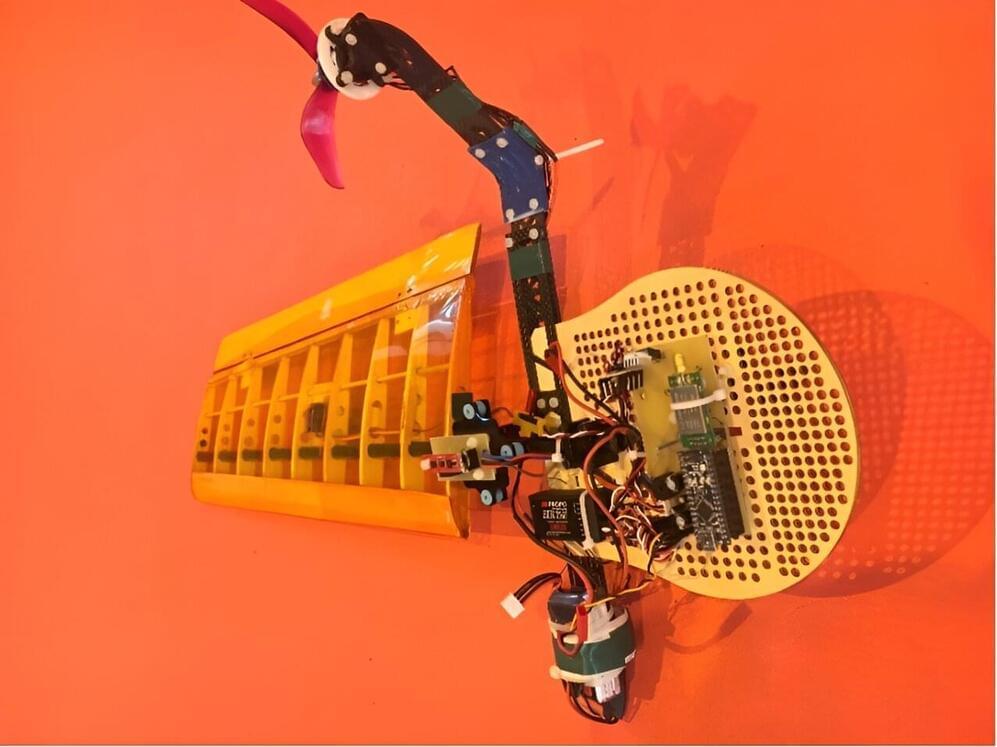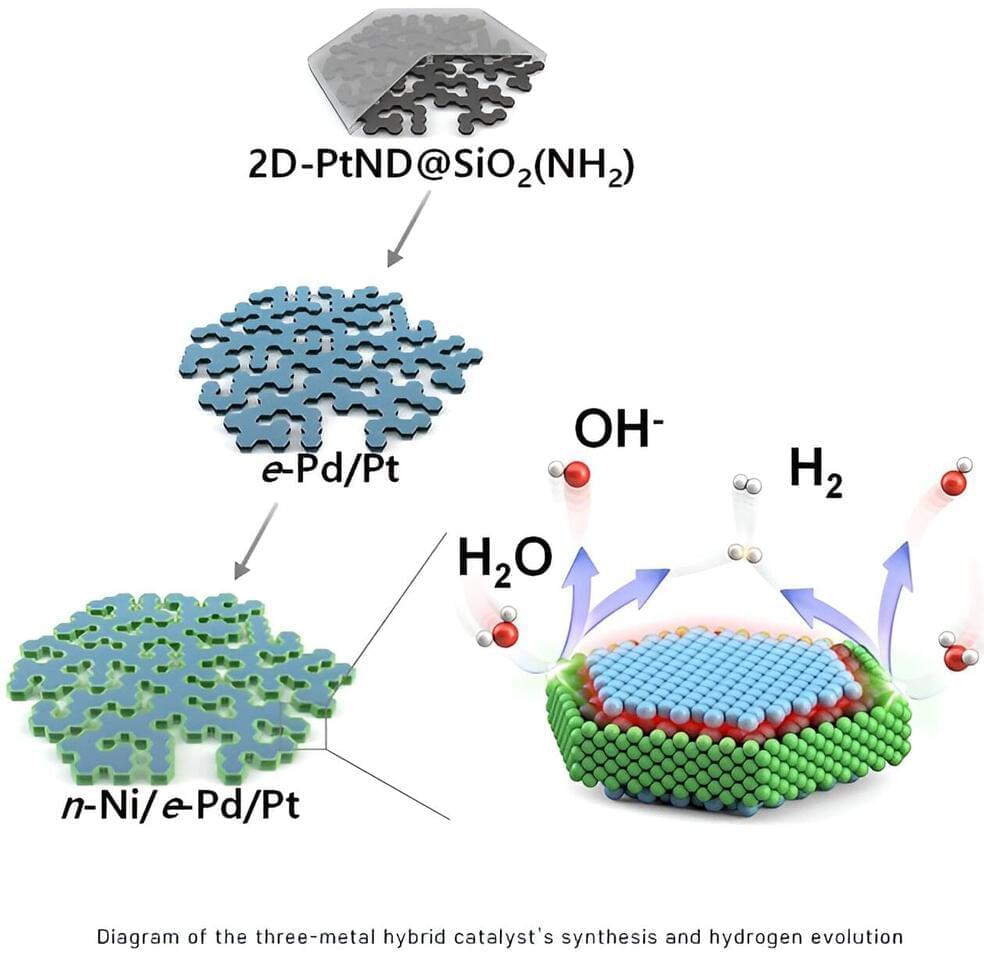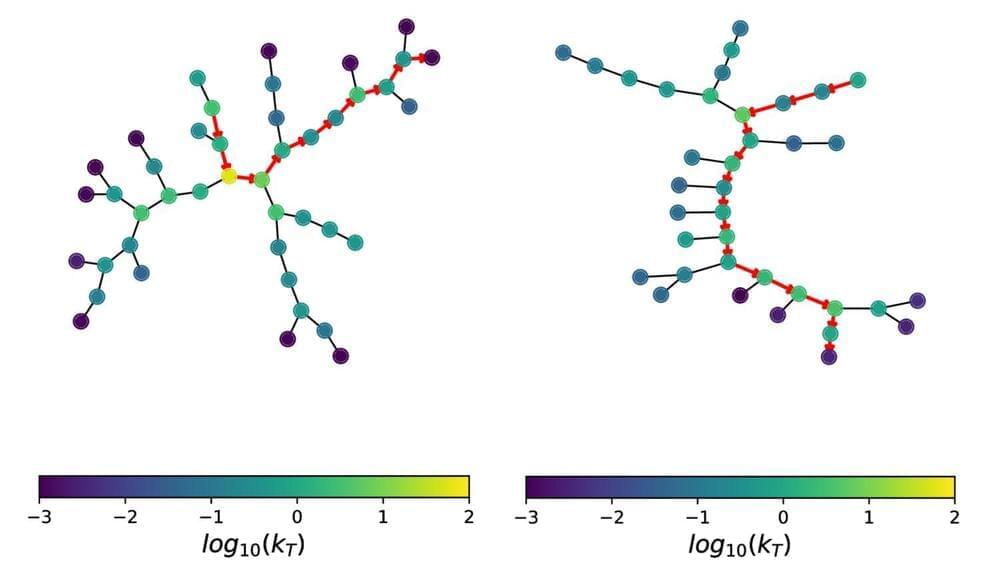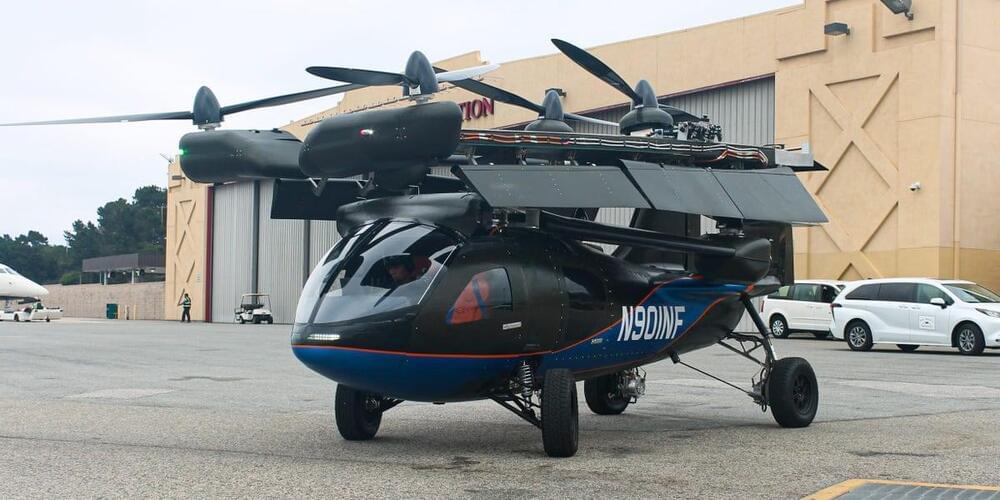The company says the airplane will have its first flight in 2027.
Category: transportation – Page 110
NASA is working with private companies to come up with designs for commercial supersonic planes. It’s also exploring tech to make sonic booms quieter.
Tesla Inc TSLA CEO Elon Musk on Wednesday spoke about his desk, or lack of it, at the company headquarters in Texas.
What Happened: Previously, Musk said, he would move his desk around the factory to wherever the biggest problem was. However, now, he doesn’t have a desk, the CEO said.
“These days, I don’t have a desk, but the room I use for meetings at HQ overlooks the Model Y end of line,” Musk wrote. He was responding to a fan on X.com who shared an old video of Musk showing his desk in the middle of the factory.
The Tesla Semi has been a groundbreaking innovation in the transportation industry. With a promised range of 500 miles on a full charge, it represents a significant step towards sustainable freight transportation. This range is not just a theoretical figure, it’s based on real-world testing with the truck fully loaded at 82,000 pounds gross combination weight. The 500-mile range has been a focal point of discussion, sparking interest and curiosity among both enthusiasts and skeptics.
While the Tesla Semi’s range has been applauded by many, it has also been met with skepticism and criticism. The debate centers around the truck’s practicality, particularly in winter conditions where electric vehicles are known to suffer range loss. Critics argue that the range might not be sufficient for long-haul trucking, especially in regions with harsh winters. They point to potential issues like battery efficiency loss in cold temperatures, raising questions about the Semi’s ability to replace traditional diesel trucks.
According to recent studies and real-world testing, the Tesla Semi can be a suitable replacement for approximately 87% of semi-truck loads, even considering winter range loss. This introduction sets the stage for a comprehensive exploration of the Tesla Semi’s 500-mile range, its performance in winter conditions, and its potential to revolutionize the freight transportation industry.
Flying robotic systems have already proved to be highly promising for tackling numerous real-world problems, including explorations of remote environments, the delivery of packages in inaccessible sites, and searches for survivors of natural disasters. In recent years, roboticists and computer scientists have introduced a multitude of aerial vehicle designs, each with distinct advantages and features.
Researchers at Sharif University of Technology in Iran recently carried out a study exploring the potential of flying robotic systems with a single wing, known as mono-wing aerial vehicles. Their paper, published in the Journal of Intelligent & Robotic Systems, outlines a new approach that could help to better control the flight of these vehicles as they navigate their surrounding environment.
“Unconventional vehicles inspired by natural phenomena consistently captivate the attention of engineers,” Afshin Banazadeh, one of the researchers who carried out the study, told Tech Xplore. “One such vehicle, the mono-wing, a single-bladed aerial vehicle, is no exception.
In order to enhance the accessibility of hydrogen-powered vehicles and establish hydrogen as a viable energy source, it’s imperative to reduce the cost of hydrogen production, thereby achieving economic feasibility. To achieve this goal, maximizing the efficiency of electrolysis-hydrogen evolution, the process responsible for producing hydrogen from water, is crucial.
Recently, a team of researchers comprising Professor In Su Lee, Research Professor Soumen Dutta, and Byeong Su Gu from the Department of Chemistry at Pohang University of Science and Technology (POSTECH) achieved a significant improvement in production efficiency of hydrogen, a green energy source, through the development of a platinum nanocatalyst. They accomplished this feat by depositing two different metals in a stepwise manner.
The findings of their research were published in Angewandte Chemie.
What happens when – instead of recording a single particle track or energy deposit in your detector – you see a complex collection of many particles, with many tracks, that leaves a large amount of energy in your calorimeters? Then congratulations: you’ve recorded a “jet”! Jets are the complicated experimental signatures left behind by showers of strongly-interacting quarks and gluons. By studying the internal energy flow of a jet – also known as the “jet substructure” – physicists can learn about the kind of particle that created it. For instance, several hypothesised new particles could decay into heavy Standard Model particles at extremely high (or “boosted”) energies. These particles could then decay into multiple quarks, leaving behind “boosted”, multi-pronged jets in the ATLAS experiment. Physicists use “taggers” to distinguish these jets from background jets created by single quarks and gluons. The type of quarks produced in the jet can also give extra information about the original particle. For example, Higgs bosons and top quarks often decay to b-quarks – seen in ATLAS as “b-jets” – which can be distinguished from other kinds of jets using the long lifetime of the B-hadron. The complexity of jets naturally lends itself to Artificial Intelligence (AI) algorithms, which are able to efficiently distil large amounts of information into accurate decisions. AI algorithms have been a regular part of ATLAS data analysis for several years, with ATLAS physicists continuously pushing these tools to new limits. This week, ATLAS physicists presented four exciting new results about jet tagging using AI algorithms at the BOOST 2023 conference held at Lawrence Berkeley National Lab (USA). Figure 1: The graphs showing the full declustering shower development and the primary Lund jet plane in red are shown in (left) for a jet originating from a W-boson and in (right) for a jet originating from a light-quark. (Image: ATLAS Collaboration/CERN) Artificial intelligence is revolutionising how ATLAS researchers identify – or ‘tag’ – what types of particles create jets in the experiment. Two results showcased new ATLAS taggers used for identifying jets coming from a boosted W-boson decay as opposed to background jets originating from light quarks and gluons. Typically, AI algorithms are trained on “high-level” jet substructure information recorded by the ATLAS inner detector and calorimeters – such as the jet mass, energy correlation ratios and jet splitting scales. These new studies instead use “low-level” information from these same detectors – such as the direct kinematic properties of a jet’s constituents or the novel two-dimensional parameterisation of radiation within a jet (known as the “Lund Jet plane”), built from the jet’s constituents and using graphs based on the particle-shower development (see Figure 1). These new taggers made it possible to separate the shape of signal and background far more effectively than any high-level taggers could do alone (see Figure 2). In particular, the Lund Jet plane-based tagger outperforms the other methods, by using the same input to the AI networks but in a different format inspired by the physics of the jet shower development. A similar evolution was followed for the development of a new boosted Higgs tagger, which identifies jets originating from boosted Higgs bosons decaying hadronically to two b-quarks or c-quarks. It also uses low-level information – in this case, tracks reconstructed from the inner detector associated with the single jet containing the Higgs boson decays. This new tagger is the most performant tagger to date, and represents a factor of 1.6 to 2.5 improvement, at a 50% boosted Higgs signal efficiency, over the previous version of the tagger, which used high-level information from the jet and b/c-quark decays as input for a neural network (see Figure 3). Figure 2: Signal efficiency as a function of the background rejection for the different W-boson taggers: one is based on the Lund jet plane, while the others use unordered sets of particles or graphs with additional structure. (Image: ATLAS Collaboration/CERN) Figure 3: Top and multijet rejections as a function of the H→bb signal efficiency. Performance of the new boosted Higgs tagger is compared to the previous taggers using high-level information from the jet b-quark decays. (Image: ATLAS Collaboration/CERN) Finally, ATLAS researchers presented two new taggers that aim to differentiate between jets originating from quarks and those originating from gluons. One tagger looked at the charged-particle constituent multiplicity of the jets being tagged, while the other combined several jet kinematic and jet substructure variables using a Boosted Decision Tree. Physicists compared the performance of these quark/gluon taggers; Figure 4 shows the rejection of gluon jets as a function of quark selection efficiency in simulation. Several studies of Standard-Model processes – including vector boson fusion – and new physics searches with quark-rich signals could greatly benefit from these taggers. However, in order for them to be used in analyses, additional corrections on the signal efficiency and background rejection need to be applied to bring the performance of the taggers in data and simulation to be the same. Researchers measured both the efficiency and rejection rates in Run-2 data for these taggers, and found good agreement between the measured data and predictions; therefore, only small corrections are needed. The excellent performance of these new jet taggers does not come without questions. Crucially, how can researchers interpret what the machine-learning models learned? And why do more complex architectures show a stronger dependence on the modelling of simulated physics processes used for the training, as shown in the two W-tagging studies? Challenges aside, these taggers set an outstanding baseline for analysing LHC Run-3 data. Given the current strides being made in machine learning, its continued application to particle physics will hopefully increase the understanding of jets and revolutionise the ATLAS physics programme in the years to come. Figure 4: Signal efficiency as a function of the background rejection for different quark taggers. The use of machine learning (BDT) results in an improved performance. (Image: ATLAS Collaboration/CERN) Learn more Tagging boosted W bosons with the Lund jet plane in ATLAS (ATL-PHYS-PUB-2023–017) Constituent-based W-boson tagging with the ATLAS detector (ATL-PHYS-PUB-2023–020) Transformer Neural Networks for Identifying Boosted Higgs Bosons decaying into bb and cc in ATLAS (ATL-PHYS-PUB-2023–021) Performance and calibration of quark/gluon-jet taggers using 140 fb−1 of proton–proton collisions at 13 TeV with the ATLAS detector (JETM-2020–02) Comparison of ML algorithms for boosted W boson tagging (JETM-2023–003) Summary of new ATLAS results from BOOST 2023, ATLAS News, 31 July 2023.
Say goodbye to rush-hour traffic. This flying car will cruise at 150 mph when it goes on sale in 2026.
Meyers Manx, the original maker of the Volkswagen Beetle-based, fiberglass-bodied beach buggy from the 1960s, just published the starting price for its all-new, all-electric Manx 2.0 electric buggy, and it’s not exactly cheap.
Revealed last year at The Quail, A Motorsports Gathering, the company’s first all-new vehicle in nearly 20 years starts at $74,000 for the base variant with the 20-kilowatt-hour battery pack and yet-to-be-released performance figures. That’s almost as expensive as the recently introduced Tesla Model S Standard Range, which starts at $78,490 and offers a 320-mile range.
The base MSRP came with no extra information and was casually thrown in a sentence at the end of the press release for the company’s new Resorter Neighborhood Electric Vehicle (NEV), which debuted last week at The Quail, so we still don’t know how much the top-of-the-line model will set prospective customers back.
In a recent advance, researchers have created a novel battery charger that can support present and future generations of battery packs for EVs across a vast range of voltages: anything between 120 and 900 volts. The new tech is described in a study published in the September edition of theIEEE Transactions on Power Electronics.
These next-generation batteries will bring shorter charging times while also weighing less, which means that EVs can be ready to drive sooner and travel farther on a full charge. “However, charging these high-voltage batteries with existing chargers degrades the efficiency, due to operating at twice the rated voltage,” says Deepak Ronanki, an assistant professor at the Indian Institute of Technology Madras, in Chennai, India, and an IEEE senior member who was involved in the study.
Ronanki and doctoral research scholar Harish Karneddi created a universal charger capable of supporting voltages between 120 and 900 V—something they say had not yet otherwise been achieved.
Ronanki and Karneddi’s battery charger is actually a two-stage charger, with a front-end boost-buck power factor correction (PFC) circuit followed by a reconfigurable DC-DC converter. As the term “boost-buck” suggests, the battery charger can boost the voltage when the battery voltage is greater than the input voltage and, conversely, buck the voltage when the battery voltage is less than the input voltage.
